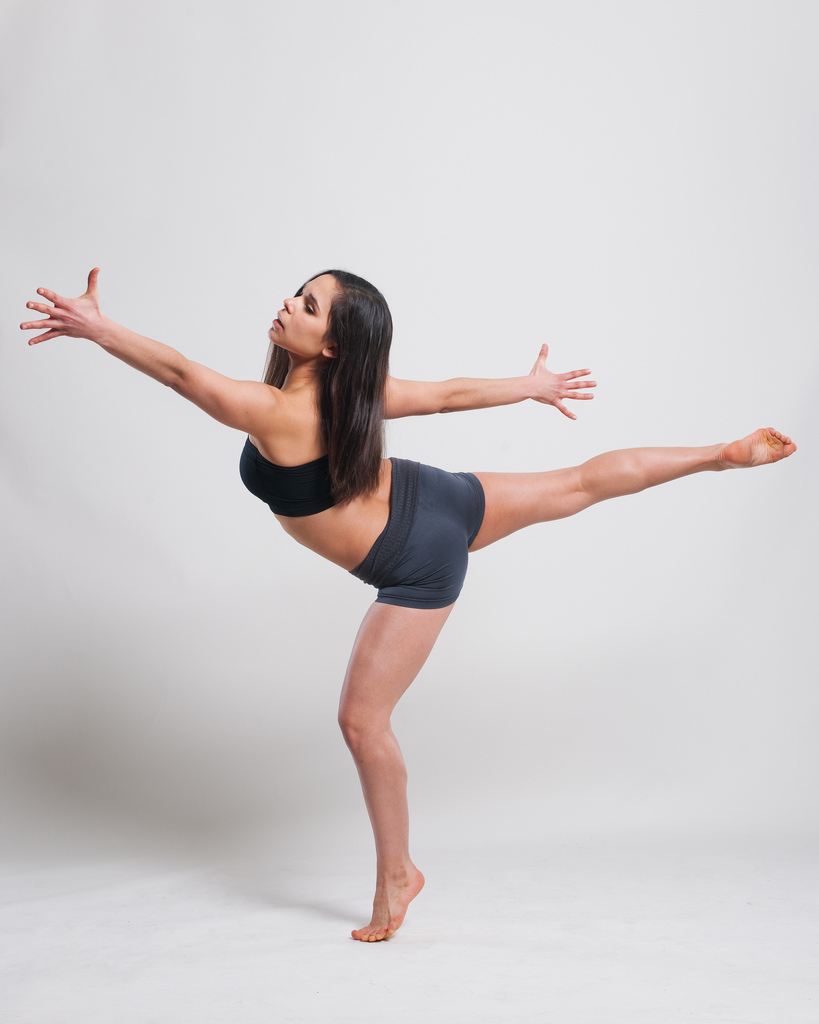
Originally from Austin, TX, dancer/choreographer Anna Reyes left her hometown and a conventional ballet/modern/jazz dance training to attend The Boston Conservatory, where she fell in love with improvisation. Rather than moving to New York straight away after college, Reyes decided to plant herself in Boston for awhile. Two years later, she’s working as a personal trainer while immersing herself in the local dance scene. I was really interested to hear about Reyes’ dual careers in personal training and dance, and whether or not she would choose only dance if given the option.
Fitness has definitely influenced my life as a dancer, primarily how I maintain my body’s strength and flexibility. I have a better understanding of how the body works. In my life as a dancer, I’ve taken class from a vast number of teachers with different ideas of how the body works (usually based on what worked for him/her as a professional). Even with the best intentions, corrections from certain teachers can be based on an incorrect understanding of human anatomy, and therefore, not very helpful. Now that I have a better understanding of which muscles work together, which oppose each other, and which are commonly over- or under-used, I can give myself more effective corrections. I’ve also developed a routine for myself in the gym that helps strengthen where I’m weak and relax what is overactive.
If you asked me if I could JUST dance right after graduating, I would have said “Of course!” But having a job that is not dance-related (but still body-related) has some pretty amazing perks. First, I have met so many interesting people through my work as a trainer, and have really enjoyed getting to know great people I would have otherwise never met. Second, I really appreciate a predictable paycheck. It is very rare for a professional modern dancer to make a living by dancing for one company in one place. Even the incredibly successful dancers I know juggle 3 or more projects, and when one is over, have to scramble to find the next paying gig to cover the rent check. The stability of having jobs outside of performing/choreographing gives me peace of mind and the power to focus on the dance projects I REALLY want to focus on.
And what are the projects she wants to focus on?
Reyes is working on her first dance film, and has spent the past six months developing the work. Titled The Good Parts of Being Alive, the film is about interpersonal relationships, and how romantic partners are impacted by time and space. She is using artwork by Egon Schiele of people in contorted positions as a choreographic tool to generate movement, and wears all hats in producing the film, including directing, dancing, and editing.
In order to fund the film, Reyes launched a Kickstarter campaign that has, thus far, been a rousing success. With just a few days left to the campaign she has far exceeded her initial goal, and is now looking to fund the project at 200% in order to hold a screening in Boston. I asked Reyes about her use of Kickstarter as a funding platform, and she had this to say:
Kickstarter seemed like a great choice [for me]. It not only can fund your project, but it also publicizes your work and gets people INVOLVED. More and more, an online presence is essential to branding yourself and your work to your supporters. Additionally, it makes you accountable in a number of ways. First of all, you have to define your project clearly and succinctly so you can communicate it to potential backers. Then, once someone decides to contribute to your project, he/she is depending on you to deliver. I like having that accountability, because it confirms that this film won’t evaporate into the ether or remain unfinished for five years. (Not that I ever planned on that, but one never knows!) I definitely see myself using Kickstarter again.
